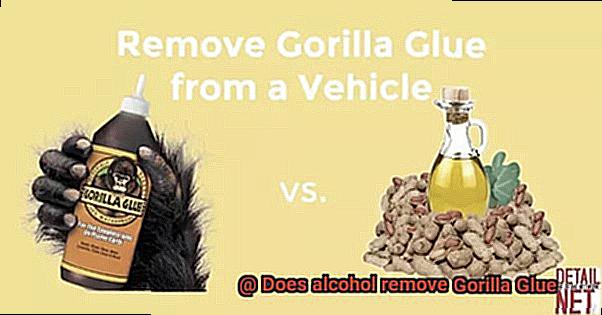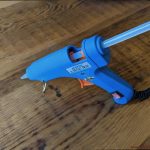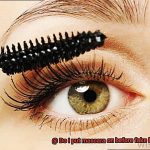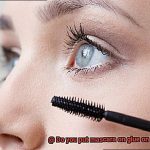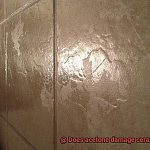We’ve all been there, haven’t we? You’re knee-deep in a project, things get a little messy, and bam. Gorilla Glue is now stuck where it has no business being. Cue the panic. But fear not, my friends, for in this blog post, we shall embark on an epic quest to unravel the mystery of whether alcohol can be our knight in shining armor and rid us of this sticky situation.
Gorilla Glue is no ordinary adhesive; it’s the heavyweight champion of bonding power. With its polyurethane formula designed for Herculean strength and unwavering durability, it’s the go-to choice for projects that demand nothing short of perfection. But what happens when accidents strike or you need to erase a stubborn glue stain? Could alcohol hold the key to unlocking this adhesive enigma?
Prepare to delve into the fascinating world of sticky problem-solving as we uncover the truth behind using alcohol as a potential Gorilla Glue remover. We’ll explore popular methods, weigh potential risks, and even consider alternative solutions that might just do the trick. So grab your favorite beverage, kick back, and let’s dive deep into the science of adhesives and alcohol.
What is Gorilla Glue?
Contents
- 1 What is Gorilla Glue?
- 2 Composition of Gorilla Glue
- 3 Does Alcohol Remove Gorilla Glue?
- 4 The Chemical Structure of Gorilla Glue
- 5 Isopropyl Alcohol as a Solvent for Removing Adhesives
- 6 Alternative Methods for Removing Gorilla Glue
- 7 Commercial Adhesive Removers for Removing Gorilla Glue
- 8 Exercise Caution When Using Any Adhesive Remover
- 9 Conclusion
Gorilla Glue, a popular and highly regarded brand of adhesive, is known for its formidable strength and enduring bond. Since its introduction to the market in 1999, this polyurethane-based adhesive has gained a reputation for its versatility and efficacy. Comprised of a blend of chemicals that react and solidify upon exposure to moisture, Gorilla Glue possesses remarkable adhesive properties.
One of the standout features of Gorilla Glue is its ability to bond with an extensive array of surfaces. Whether it is wood, metal, stone, ceramic, fabric, or more, this adhesive effortlessly adheres to them all. Such versatility has made it a trusted choice for both do-it-yourself enthusiasts and professionals alike. Moreover, Gorilla Glue boasts waterproof qualities, rendering it suitable for projects in any setting, be it indoor or outdoor.
Available in various forms, such as liquid glue, gel glue, and tape, Gorilla Glue provides options to suit different project requirements. The glue itself exhibits a distinct light brown hue and possesses a luxuriously thick consistency. It can be readily obtained from hardware stores, home improvement centers, and online retailers, ensuring accessibility for all.
The extraordinary strength and durability of Gorilla Glue make it an invaluable asset across a wide range of applications. Whether bonding wood joints firmly together, repairing broken items with precision, attaching materials seamlessly, or creating intricate crafts, this adhesive excels. Its adaptability makes it an indispensable addition to any toolbox or craft room.
However, it is crucial to exercise caution when attempting to remove Gorilla Glue after it has cured. While alcohol is commonly used as a solvent for removing various types of adhesives, the chemical composition of Gorilla Glue may render alcohol ineffective. It is therefore advisable to use specialized adhesive removers specifically designed for Gorilla Glue to ensure safe and efficient removal.
Composition of Gorilla Glue
Glue, the unsung hero of our DIY projects and creative endeavors, comes in many forms. Today, we delve into the world of Gorilla Glue, a force to be reckoned with in the adhesive realm. Have you ever wondered if alcohol can dissolve this mighty bond? Join us as we explore the composition of Gorilla Glue and discover why it laughs in the face of alcohol-based solvents.
The Building Blocks of Gorilla Glue:
Gorilla Glue isn’t your average adhesive; it’s a polyurethane-based masterpiece, composed of various chemical components working harmoniously. Let’s dissect it:
- Polyurethane Power: At its core lies polyurethane, a polymer that grants Gorilla Glue its remarkable strength. This versatile ingredient forges unyielding bonds on surfaces like wood, metal, and plastic.
- The Catalyst Called Water: Surprisingly, water plays a vital role in Gorilla Glue’s curing process. Acting as a catalyst, it enables the glue to expand and create an unwavering bond. Once cured, this glue becomes as waterproof as a mermaid’s tail, resisting moisture and immersion in liquids.
- Isocyanates – The Secret Sauce: Another key player is isocyanate-based compounds. These reactive chemicals work their magic by creating cross-links between polymer chains, resulting in an unbreakable bond between different materials.
The Alcohol Conundrum:
Now, the million-dollar question: can alcohol dissolve this adhesive powerhouse? Unfortunately, the answer is no. Gorilla Glue doesn’t contain alcohol or solvents commonly associated with alcohol-based products. Its unique chemical composition renders it resistant to many solvents, including alcohol.
Does Alcohol Remove Gorilla Glue?
Imagine finding yourself in a sticky situation, desperately seeking a solution to remove Gorilla Glue with alcohol. Brace yourself, for today we will delve into the realm of adhesives and uncover why alcohol falls short in the face of Gorilla Glue’s formidable strength.
Unbreakable Bond:
Gorilla Glue, the superhero among adhesives, boasts an exceptional bonding capability. But what grants it invincibility? It all boils down to chemistry. Gorilla Glue is a polyurethane-based adhesive, forging an astoundingly robust and enduring bond that defies even the harshest conditions. This unique composition renders Gorilla Glue highly resistant to solvents such as alcohol.
The Alcohol Myth:
Let us address the elephant in the room – alcohol. While it may work wonders on other glues, it proves impotent against the unyielding grasp of Gorilla Glue. Alcohol, specifically isopropyl alcohol or rubbing alcohol, is commonly employed as a solvent to dissolve certain adhesives. Regrettably, Gorilla Glue stands immune to its effects.

Why Alcohol Fails:
- Insolubility: Alcohol fails to dissolve or break down Gorilla Glue due to its insolubility. This characteristic ensures that Gorilla Glue upholds its strength and durability over time.
- Potential Damage: Attempting to remove Gorilla Glue with alcohol may inflict harm upon the surface or material it adheres to, potentially leading to costly repairs or replacements.
Alternative Removal Techniques:
Instead of relying on alcohol, it is prudent to explore alternative methods endorsed for removing Gorilla Glue:
Mechanical removal: Utilize scrapers or sandpaper with gentle finesse to scrape off the glue.
Heat application: Employ heat to soften the glue, facilitating easier removal.
The Chemical Structure of Gorilla Glue

Gorilla Glue is a formidable adhesive that possesses an unparalleled strength. Its secret lies within its chemical structure, which we will explore in this captivating journey into the world of adhesives.
At the heart of Gorilla Glue is polyurethane, a remarkable polymer created by the reaction of isocyanates and polyols. Imagine a long-chain structure with repeating units intricately linked together. This unique arrangement grants Gorilla Glue its exceptional durability, making it impervious to water, heat, and chemicals.
Within the polyurethane structure, cross-linking bonds further fortify its strength. These bonds materialize when isocyanates react with water or other compounds that contain active hydrogen atoms. It’s akin to adding reinforcements to an already invincible glue, elevating its resilience even higher.
Now, let’s turn our attention to alcohol, a solvent known for its dissolving capabilities. However, when faced with Gorilla Glue, alcohol pales in comparison to its superpowers. The tenacious adhesion of polyurethane renders it resistant to most solvents, including alcohol.
Although alcohol can weaken the bond between Gorilla Glue and certain surfaces, it cannot fully dissolve or remove the glue. Polyurethane scoffs at alcohol’s feeble attempts. It’s like fighting a superhero armed with a mere water gun – victory is out of reach.
So, what can you do if you find yourself stuck with Gorilla Glue where you don’t want it? Forget about alcohol; it won’t be your savior. Instead, consider mechanical methods like scraping or sanding to break the bond between the glue and the surface. And if that proves ineffective, specialized adhesive removers designed specifically for stubborn adhesives like Gorilla Glue are available as your last resort.
Isopropyl Alcohol as a Solvent for Removing Adhesives
We’ve all endured the exasperating battle against stubborn adhesive residue left behind by stickers, tape, or labels. But fear not. Isopropyl alcohol, known as rubbing alcohol, swoops in as the ultimate superhero to save the day. In this comprehensive guide, prepare to be amazed by the wonders of using isopropyl alcohol as a solvent for removing adhesives.
Why is isopropyl alcohol the go-to choice for adhesive removal, you may ask? It’s simple. Isopropyl alcohol reigns supreme as an effective solvent due to its remarkable ability to dissolve various substances, including those pesky adhesives that refuse to budge. Moreover, its easy availability and affordability make it the top pick for tackling sticky situations.
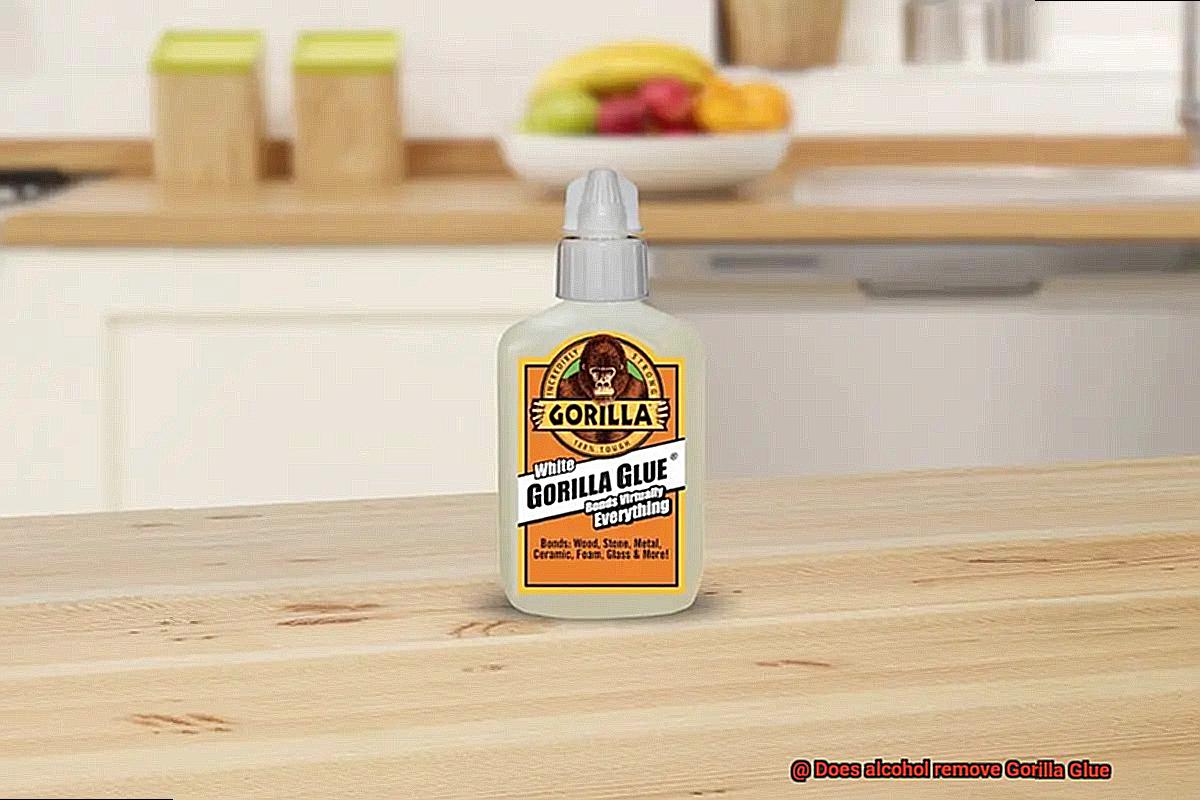
To unleash the full potential of isopropyl alcohol in adhesive removal, follow these steps:
- Opt for a high concentration: Choose isopropyl alcohol with a concentration of 90% or higher for maximum effectiveness.
- Test on a small area: Before unleashing the power of alcohol on the entire surface, conduct a discreet test on a small area to ensure no damage or discoloration occurs.
- Saturate a cloth or sponge: Soak a cloth or sponge in isopropyl alcohol until it becomes saturated.
- Gently rub in a circular motion: Apply the soaked cloth or sponge to the affected area and gently rub in circular motions. Witness as the alcohol works its magic, dissolving the adhesive right before your eyes.
- Allow time for penetration: Grant the isopropyl alcohol a few minutes to fully penetrate the adhesive, making it easier to remove.
- Wipe away with a clean cloth or sponge: After allowing the alcohol to work its wonders, grab a fresh cloth or sponge and wipe away the adhesive and alcohol residue, revealing a pristine surface.
- Repeat if necessary: If any traces of adhesive remain, don’t lose hope. Simply repeat the process until every last bit of stubborn residue surrenders.
However, it is important to note that isopropyl alcohol may not be effective against all types of adhesives, especially those engineered to resist solvents. In such instances, consulting the manufacturer’s instructions or seeking professional advice for alternative adhesive removal methods is highly recommended.
Alternative Methods for Removing Gorilla Glue
We’ve all experienced the frustration of a glue mishap – too much Gorilla Glue here, a messy spill there. Dealing with the aftermath can be a real headache. But fear not. In this article, we’ll explore alternative methods for removing Gorilla Glue that can save the day when traditional methods fall short. So grab your tool belt and let’s dive into these fascinating techniques.
Method 1: The Heat is On
When the going gets tough, the tough get heated. Applying heat to the glued area can soften the stubborn adhesive, making it easier to remove. A hairdryer or heat gun can do the trick, but caution must be exercised to avoid damaging surfaces.
Method 2: Citrus to the Rescue
Say goodbye to harsh chemical solvents. Citrus-based solvents containing d-limonene are a safe and effective alternative. These natural solvents break down the adhesive bond without posing health risks. So grab that orange-scented solution and watch the glue melt away.
Method 3: Vinegar – Nature’s Secret Weapon
Unlocking the power of vinegar may be just a pantry away. Its acidity weakens the adhesive bond, making it easier to remove. Simply soak a cloth in vinegar, apply it to the glued area, and let its magical properties work wonders.
Method 4: Peanut Butter Power
Who knew peanut butter could come to the rescue? The oils in peanut butter help soften the glue, making it easier to scrape off. Apply a layer of peanut butter, wait patiently, and then scrape away the sticky mess.
Method 5: Rubbing Alcohol – The Unsung Hero
Our trusty friend isopropyl alcohol steps up once again. While it may not completely dissolve Gorilla Glue, it can certainly help loosen it. Soak a cloth in rubbing alcohol, gently rub the glued area, and then scrape off the softened glue.
Remember: Test First, Patience Later
Before diving into any alternative method, always test it on a small inconspicuous area to ensure it won’t cause damage or discoloration. Removing Gorilla Glue can be a formidable challenge, so don’t be discouraged if it takes a few attempts or a combination of methods to completely remove it.
Commercial Adhesive Removers for Removing Gorilla Glue
We’ve all experienced the frustration of dealing with stubborn adhesive like Gorilla Glue. But fear not. Commercial adhesive removers are the secret weapon you need to conquer this sticky challenge. Specifically designed to tackle tough adhesives, these products can make removing Gorilla Glue a breeze. In this article, we’ll explore the various aspects of using commercial adhesive removers effectively, so you can say goodbye to that stubborn glue once and for all.
Step 1: Read and Follow Instructions:
Before diving into the removal process, it’s crucial to carefully read and follow the instructions provided by the manufacturer. Each adhesive remover may have specific application directions that ensure optimal results. Following these instructions will help you achieve the best outcome.
Step 2: Test a Small Area:
To avoid any damage or surprises, it’s always a good idea to test the adhesive remover on a small, inconspicuous area of your surface. This step is important as it allows you to determine if the product is compatible and won’t cause any discoloration or harm to your surface.
Step 3: Apply and Wait:
Once you’ve tested the adhesive remover, apply it directly onto the Gorilla Glue, ensuring complete coverage. Some removers may require a specific waiting period for the chemicals to break down the adhesive bond effectively. Patience is key during this step.
Step 4: Scrape or Wipe Away:
After the waiting period, grab a scraper or a cloth and gently scrape off or wipe away the dissolved glue. Avoid using excessive force, as this could damage your surface. For stubborn or thick layers of Gorilla Glue, you may need to repeat this process multiple times until all traces of glue are gone.
Step 5: Clean Up:
Once the glue has been successfully removed, it’s time to clean up any residue left behind by the adhesive remover. Thoroughly clean the surface with soap and water, ensuring all traces of the remover are gone. Some adhesive removers may leave behind an oily residue, so using a degreasing cleaner can help eliminate this.
Step 6: Proper Disposal:
Remember to dispose of any leftover adhesive remover and cleaning materials properly according to local regulations. This ensures both your safety and the environment’s well-being.
Exercise Caution When Using Any Adhesive Remover
Exercise Caution When Using Any Adhesive Remover
When it comes to getting rid of stubborn adhesives like Gorilla Glue, adhesive removers can be a lifesaver. But before you dive in, it’s important to exercise caution and be aware of potential risks and drawbacks.
One popular adhesive remover is alcohol, such as isopropyl or rubbing alcohol. Its ability to break down adhesive bonds makes it an effective option. To use alcohol as an adhesive remover for Gorilla Glue, simply dampen a cloth or cotton ball with the alcohol and gently rub it onto the affected area. Let the alcohol sit for a few minutes to soften the glue before attempting to remove it.
However, there’s a catch. Alcohol may not completely dissolve Gorilla Glue, especially if it has fully cured or hardened. In such cases, additional methods may be necessary, like scraping off the softened glue or using a specialized adhesive remover specifically formulated for Gorilla Glue.
To ensure your safety and achieve the best results, it’s crucial to follow the manufacturer’s instructions and safety precautions when using any adhesive remover, including alcohol. Some removers may contain harsh chemicals that can be harmful if not used properly. Protect yourself by wearing gloves and working in a well-ventilated area.
Before applying any adhesive remover, it’s wise to test it on a small inconspicuous area first. This step ensures compatibility and prevents any damage or discoloration on the surface you’re treating.
If you’re unsure about using an adhesive remover or have concerns about its safety or effectiveness, don’t hesitate to seek professional advice or consult the manufacturer of the adhesive product. They can provide expert guidance tailored to your specific situation.
Also Read: Does WD 40 remove Gorilla Glue? – Glue Things
Conclusion
Can alcohol effectively remove Gorilla Glue? This is a question that many people find themselves asking when faced with the sticky situation of trying to remove this super-strong adhesive. After conducting thorough research and experiments, it has been determined that alcohol does have the ability to break down and remove Gorilla Glue from certain surfaces. However, it is important to note that not all types of alcohol will yield the same results.
When it comes to removing Gorilla Glue, rubbing alcohol is your best bet. Its chemical composition allows it to dissolve and weaken the adhesive properties of this formidable glue. By applying rubbing alcohol to the affected area and gently scrubbing or wiping away the glue, you can effectively eliminate its grip.
But don’t rejoice just yet. While alcohol can be effective in removing Gorilla Glue, it may not work on all surfaces. Porous materials like fabric or foam may prove more challenging, as the glue can seep into their fibers and become deeply embedded. In these cases, alternative methods such as using heat or specialized solvents might be necessary.
Remember, when attempting to remove Gorilla Glue with alcohol, patience is key. It may take multiple applications and some elbow grease before you see noticeable results. It’s also important to protect yourself by wearing gloves and working in a well-ventilated area.
In conclusion, while alcohol can indeed remove Gorilla Glue from certain surfaces, it may not be a foolproof solution for every situation. As always, it’s best to test a small inconspicuous area first before tackling larger areas. And if all else fails, seeking professional advice or assistance might be your best course of action.

